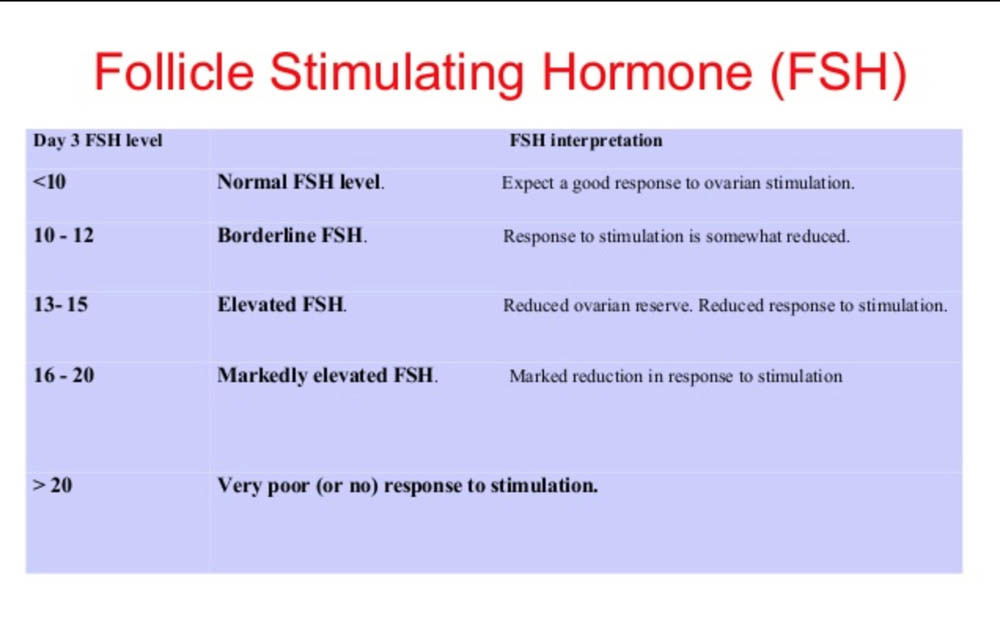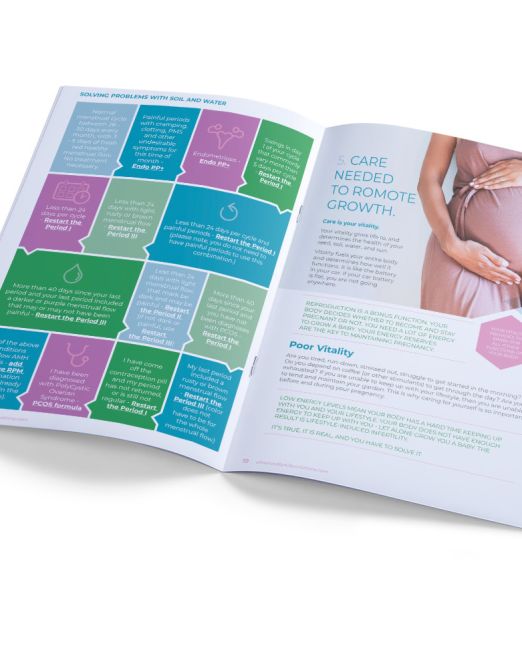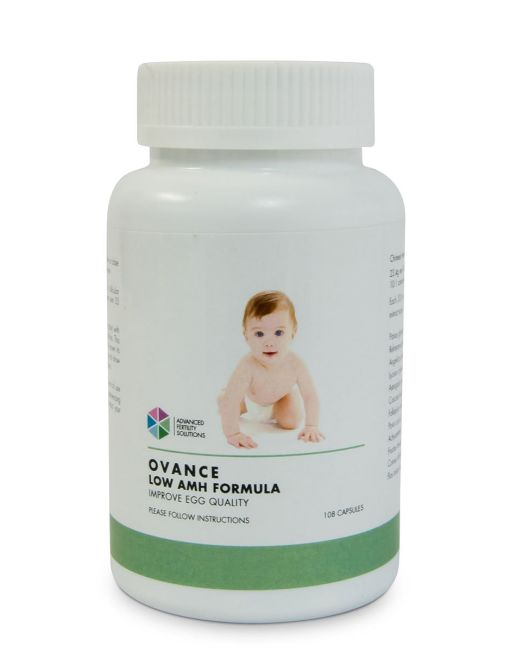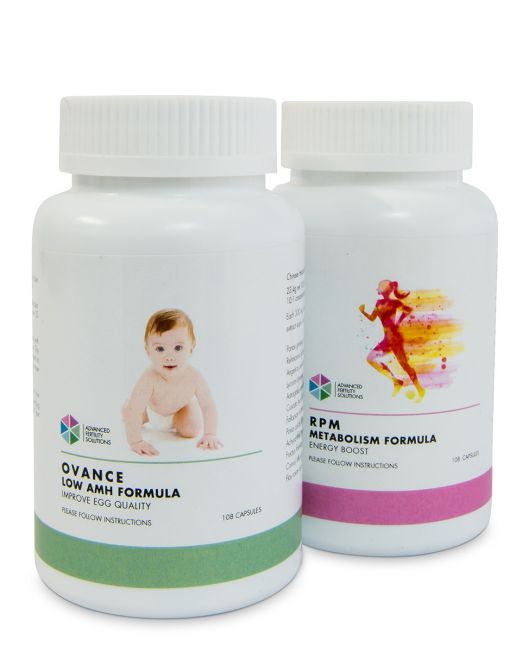This post is also available in: Español
Welcome to our informative guide on the AMH test, a valuable tool in assessing a woman’s ovarian reserve. In this article, we will delve into the details of the AMH test, exploring how it is conducted, what it measures, who can benefit from it, and how to interpret the results. Whether you’re a healthcare professional or an individual interested in reproductive health, this comprehensive resource will provide you with a solid understanding of the AMH test.
Receiving a low Anti-Mullerian Hormone (AMH) test result can be disheartening for hopeful parents. It’s a fact that good AMH levels play a crucial role in the journey of turning your eggs into babies. Medical tests and treatments have shown that achieving pregnancy, whether naturally or through IVF, can be more challenging with low AMH levels, as success rates tend to be modest.
However, it’s important to note that a low AMH result doesn’t necessarily mean all hope is lost, as there are other important factors to consider. While rushing into IVF is a common recommendation from doctors, it shouldn’t be the sole advice you rely on.
To fully comprehend the implications of your AMH test results on your fertility, it’s essential to gain an understanding of the test itself and its significance.
some background first
Let’s start with some background information. Approximately two decades ago, the AMH test emerged as a superior predictor of successful IVF pregnancies, surpassing the Follicular Stimulating Hormone (FSH) test. Doctors always strive for reliable facts to guide their patients’ treatment decisions. Unlike the FSH test, the AMH test can be conducted at any point during a woman’s monthly cycle. AMH levels are considered a stable indicator and possess better predictive ability for IVF success rates.
What is the AMH Test?
The Anti-Müllerian Hormone (AMH) test is a blood test that measures the levels of a hormone produced by the ovaries called Anti-Müllerian Hormone. The AMH test provides valuable insights into a woman’s ovarian reserve, which refers to the number and quality of her remaining eggs. Ovarian reserve is an essential factor in determining fertility potential and can help in assessing various reproductive health conditions.
How is the AMH Test Performed?
The AMH test is a straightforward and minimally invasive procedure. It typically involves a simple blood draw performed by a healthcare professional. Here’s a step-by-step breakdown of the process:
- Preparation: Prior to the test, your healthcare provider may ask you to fast for a certain period, usually overnight, to obtain accurate results.
- Blood sample collection: During the procedure, a healthcare professional will insert a sterile needle into a vein, typically in your arm, to collect a small sample of blood. The process is quick and relatively painless.
- Laboratory analysis: The blood sample is then sent to a laboratory, where it undergoes analysis to measure the AMH levels accurately. The results are usually available within a few days.
What Does the AMH Test Measure?
The AMH test measures the levels of Anti-Müllerian Hormone in a woman’s blood. AMH is produced by the small follicles in the ovaries, which contain immature eggs. The test provides an indication of the number of these small follicles and, consequently, the quantity of eggs remaining in the ovaries. Since AMH levels decline as a woman ages, the test is useful in assessing ovarian reserve and potential fertility.
The AMH test results can help healthcare professionals evaluate the following:
- Fertility potential: Low AMH levels may indicate a reduced ovarian reserve, which could affect a woman’s ability to conceive naturally or respond to fertility treatments such as in vitro fertilization (IVF).
- Menopause timing: The AMH test can provide insights into the timing of menopause. A woman with very low AMH levels may be closer to menopause than someone with higher levels.
- Polycystic ovary syndrome (PCOS): AMH levels are often elevated in women with PCOS, a common hormonal disorder that can lead to irregular periods and difficulty conceiving.
Who Can Benefit from the AMH Test?
The AMH test is particularly valuable for women who:
- Are planning to conceive: The test can help assess a woman’s fertility potential and aid in family planning decisions.
- Have irregular menstrual cycles: Women with irregular periods may consider the AMH test to gain insights into their ovarian reserve and potential underlying conditions such as PCOS.
- Are undergoing fertility treatments: For women undergoing fertility treatments like IVF, the AMH test can provide critical information on the appropriate treatment approach, medication dosage, and the likelihood of success.
interpreting the results
The interpretation of Anti-Mullerian Hormone test results can vary depending on whom you consult. Your AMH test results hold significance for your Obstetrician-Gynecologist (ObGyn) or Reproductive Endocrinologist for the following reasons:
AMH test results are typically reported in nanograms per milliliter (ng/mL) or picomoles per liter (pmol/L). It’s important to note that interpreting AMH results requires expertise from a healthcare professional who can consider the individual’s specific circumstances. However, here is a general guideline:
- High AMH levels: Elevated AMH levels may indicate conditions such as PCOS or the presence of ovarian cysts. In some cases, high AMH levels can affect fertility and require further evaluation by a healthcare professional.
- Normal AMH levels: Falling within the normal range is typically positive, suggesting a good ovarian reserve and the potential for successful fertility treatments.
- Low AMH levels: Low AMH levels may indicate a diminished ovarian reserve, which could impact fertility. However, it’s important to remember that low levels do not equate to infertility, as other factors can contribute to successful conception.
- Assessing the likelihood of successful IVF drug response: Your AMH results provide valuable insights into how effectively IVF drugs will stimulate your ovaries. Lower AMH levels indicate diminished responsiveness to IVF drugs, while normal or above-normal levels enhance their efficacy.
- Enhancing IVF success rates: Improved response to IVF drugs increases your chances of achieving pregnancy through IVF. The effectiveness of IVF drugs is closely linked to the number of eggs matured, and higher AMH levels generally contribute to a larger harvest of mature eggs during the egg retrieval process.
Considering alternative options: Depending on the severity of your low AMH results, your healthcare provider may recommend exploring the possibility of using a donor egg for IVF.
What do the numbers mean?
To better comprehend the significance of AMH test results, it’s essential to understand the reference ranges:
- Normal AMH levels are typically around 1.96 ng/ml or 14 pmol/l.
Anything below these numbers is considered low AMH levels. - Very low AMH levels are classified as below 0.5 ng/ml or 1 pmol/l.
- Normal AMH levels generally indicate that IVF drugs can yield 8-15 mature eggs during egg retrieval.
- Lower-than-normal AMH levels limit the number of eggs that can be matured through IVF drugs.
- Fewer eggs retrieved during the process decrease the likelihood of IVF resulting in pregnancy.
the amh test: IVF’s crystal ball?
AMH levels serve as a crystal ball, providing insights into the expected efficacy of IVF drugs during a cycle. IVF drugs are designed to stimulate the growth of more eggs than the ovaries typically produce naturally. It’s important to remember that in a regular menstrual cycle, only one egg is usually released for ovulation. However, IVF aims to retrieve 8-15 mature eggs during the egg retrieval process, significantly improving the chances of achieving pregnancy.
Low AMH levels represent a cloud in the IVF crystal ball. When entering IVF with low AMH levels, the ovarian stimulation drugs used to promote egg growth may not work as effectively. Consequently, the limited number of eggs retrieved reduces the chances of success. It’s important to note that low AMH levels have broader implications beyond IVF success rates, as there are other hormonal factors that influence the final outcome.

To learn more about how Low AMH and IVF works, click here
AMH with FSH – the real crystal ball.
It is also crucial to consider the interplay between AMH and FSH levels. While it’s true that only one egg is needed for pregnancy, the number of eggs stimulated by IVF drugs relies not only on AMH levels but also on the follicle-stimulating hormone (FSH). FSH takes over from AMH in completing the growth of eggs and plays a decisive role. Regardless of whether AMH levels are good or poor if day 3 FSH levels exceed 20 IU/L, the likelihood of IVF success decreases.
However, there is some hope for individuals with low AMH levels but FSH levels below 10 IU/L on day 3. In such cases, the egg retrieval process can yield more than five eggs, even with low AMH. This indicates a better-than-expected response to IVF drugs, and it suggests that you may not be classified as a Poor Ovarian Responder.
The wider the gap between AMH and FSH levels, the lower the chances of pregnancy. Day 3 FSH levels exceeding 16 IU/L diminish the chances of IVF success. While other treatments have shown effectiveness, FSH levels also influence the outcome of these treatments. It’s crucial to evaluate your individual AMH and FSH results in relation to alternative treatment methods. Remember, your AMH test results do not define what is possible or impossible in terms of achieving pregnancy.
To delve deeper into the connection between AMH and IVF, you can find additional information here
conclusion
The AMH test is a valuable tool for assessing a woman’s ovarian reserve and fertility potential. By measuring the levels of Anti-Müllerian Hormone in the blood, healthcare professionals can gain insights into the quantity and quality of remaining eggs. The test is minimally invasive and can be beneficial for women planning to conceive, those with irregular menstrual cycles, and those undergoing fertility treatments.
Interpreting AMH test results should be done by a qualified healthcare professional who can consider the broader context of the individual’s reproductive health. By understanding the results, women and their healthcare providers can make informed decisions regarding fertility treatments, family planning, and other aspects of reproductive health.
Your AMH test results do not define what is possible or impossible.
Learn more about AMH and IVF here.
WHAT YOU NEED TO KNOW
New mothers in their 40’s are becoming more common. Falling pregnant in your 40’s is harder than in your 20’s, yet the desire for children comes at different ages. There are some critical things you should know to help you fall pregnant in your 40’s. Learn about getting pregnant naturally after 40.
Low AMH is no the end to your fertility; it is a problem to overcome. Low AMH levels are a big problem for IVF…they don’t have to be your problem too. Here are 10 things you should know right now.
Visiting your doctor is the first port of call for most people when sick. Today the idea that “If my doctor can’t help me, then no-one can,” is standard for many people.
for the most optimal outcomes
refunds & DISCLAIMER
Please click to view our refund policy and disclaimers








